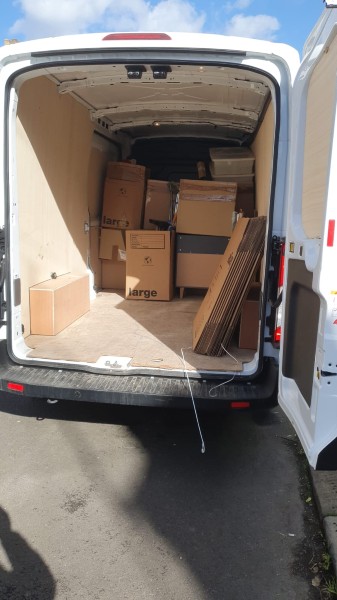The home removals industry has transformed massively over the past half-century. The labour-intensive, largely unorganized sector of the past has evolved into an exceptionally efficient, productive, and professional industry. Various factors have played a role in this evolution, including changes in consumer preferences and technical advancements. In this post Andrews Removals explore the fascinating journey of home removals over time and how the evolution of home removals has advanced this service industry.
The procedure of moving house was very different fifty years ago from how it is now.
Removal companies relied heavily on manual labour, with teams of movers loading and unloading items by hand. Trucks were smaller and less complex, with fewer contemporary comforts and safety features than we take for granted today. Furthermore, the documentation and administrative tasks associated with moving were often time-consuming and involved substantial paperwork and coordination.

Significant Changes in the Home Removals Industry
One of the most significant changes in the home removals industry in the last five decades has been the introduction of new technology. The use of computerised systems for scheduling, monitoring, and overseeing moves has completely changed how removal businesses conduct business. These days, clients may use smartphone apps to connect with movers, plan their moves online, and follow the status of their shipments in real-time. Businesses may now more easily optimise their routes to use less fuel and have a smaller environmental effect thanks to GPS technology, minimizing the environmental impact.
Technological developments in packing supplies and methods have also had a significant influence on the house moving sector. Newspaper and cardboard boxes were the most common materials used to package home products fifty years ago. Businesses now use a variety of specialised packing materials, such as foam padding, bubble wrap, and custom containers to ensure the safe transportation of fragile objects,. Furthermore, the development of new packing techniques, such as vacuum sealing and shrink wrapping, has enabled maximum space utilisation while reducing the danger of damage during transit.
Another notable advancment in home removals has been the adoption of a more customer-centric strategy. Previously, moving house was typically a stressful if not entirely chaotic event, with little concern for the customers stress levels. Today’s removal firms usually attempt to create a stress-free moving experience by offering varioys additional services such as packing, unpacking, and storage to meet the clients’ specific requirements. Customer satisfaction has become the primary focus for many quality removals businesses, with most investing in staff training programme while implementing quality assurance measures to maintain high standards of service.

Changing Consumer Needs
Changing consumer demands have also influenced the evolution of the home removals sector. Fifty years ago, most people depended on traditional removal agencies to manage their moves. Alternative solutions, like do-it-yourself moving services and portable storage containers, are becoming more and more popular these days. Organisations such as PODS and U-Haul have leveraged this trend by providing adaptable and affordable options that let clients relocate at their own speed.
The house removals sector is expected to continue growing and innovating into the future. Automation processes and other technological innovations like Ai are will probably become more and more crucial in optimising the removals process and further improving consumer satisfaction. Environmental sustainability is also becoming a major concern, and many established removals firms are looking into eco-friendly equiptment such as recyclable packaging materials and fuel-efficient cars.
To wrap up, over the past 50 years, the home removals sector has advanced significantly. The evolution of home removals industry has changed dramatically from manual labour and paper-based procedures to digital innovation and customer-centricity. As we look ahead, technological innovations and changing customer preferences will undoubtedly shape the industry in new and interesting ways.
